Speaking recently at Georgetown University, Mark Zuckerberg told an audience “I’ve focused on building services to do two things: give people voice, and bring people together.” He later said “More people being able to share their perspectives has always been necessary to build a more inclusive society.” The speech anointed Facebook as the “Fifth Estate” in which “people no longer have to rely on traditional gatekeepers in politics or media to make their voices heard.”
The problem is that the platform Zuckerberg created does more than “give people voice, and bring people together.” It is economically incentivized to drive people apart. In the process it shatters an underpinning of democracy.
From broadcasting to “targetcasting”
Since the time of the early advertising-supported newspapers, economic incentive has worked to bring people together around a common set of shared information. Maximizing ad revenue meant offending as few readers as possible by at least attempting a balanced presentation of the facts. The search for balance began to retreat with the arrival of cable television, but the economic model of maximizing revenue by maximizing reach still governed. The targeting capability of social media algorithms, however, has extinguished the traditional economic model. Now profit comes not through the broad delivery of common information, but the targeted delivery of selected information. The result is an attack on the model of shared information that is necessary for a democracy to function.
Radio and television are “broadcasting”: from a single source they deliver to the widest possible audience. Broadcasting changed the nature of communications from after-the-fact newspapers to the wide distribution of real time information. The image of a family huddling around the radio to hear one of FDR’s fireside chats comes to mind; a common set of inputs available to all upon which to base collective decisions.
Cable television is “narrowcasting.” Cable is like a video newsstand with many titles from which to choose. To differentiate themselves on this newsstand cable news channels developed “an attitude” espousing different political viewpoints. While narrowcasting was driven by conflict and disagreement, the revenue-maximizing goal was still the same as broadcasters’: reach the largest audience possible.
Social media is “targetcasting.” Software algorithms owned by the social media platforms watch how users behave online and use that data to categorize them into specific groups. They then sell advertisers the ability to reach those groups. Targetcasting companies make money the opposite way from broadcasters and narrowcasters. Instead of selling reach to a wide audience, they charge a premium to target a small but specifically defined group.
An even greater differentiator between traditional media and social media is how targetcasting is available only to a specific audience. Such secret targeting tears at the fabric of democracy. The Founding Fathers made E Pluribus Unum (out of many one) the national motto. They began the Constitution with the collective “We the people.” Such a coming together, the Founders realized, was essential for their experiment in democracy to function.
To become “We” requires a suspension of human nature’s tribal instincts in favor of a shared future. Such a belief is predicated in part on shared information.
Coming together in an environment of shared information—an information commons—is a key component of moving from tribes to the larger Unum. When the algorithms of social media follow the money, they discourage the search for Unum and undermine the communal “We.” By delivering different information to each tribe—in secret—the algorithms keep users online for as long as possible, maximizing ad sales. In doing so, they gnaw away at the heart of “We the people.”
Balance and transparency
As broadcasting was beginning in the 1920s and 30s there was a concern that it could be captured to become an anti-democratic force. Congress acted to assure conflicting ideas had access to the airwaves. Following World War II’s example of radio being used to manipulate the German population, and with the rising fear of Communism, the Federal Communications Commission (FCC) used its congressionally-delegated authority to impose the Fairness Doctrine rules on broadcasters, requiring the airing of all sides of controversial issues. Assuring the widest possible dissemination of political viewpoints, the thinking went, prevented one ideology from controlling the information necessary for an informed citizenry and functioning democracy.
When cable television came along—expanding rapidly in the 1970s and 80s—the expansive capacity of coaxial cable meant that television providers could target specific interests with specialized channels. What’s more, because cable channels did not use the public’s airwaves, they weren’t subject to the balance requirements set by the FCC’s rules. The ability to change the channel to discover a different point of view, however, remained freely available. The algorithms of social media do not provide such an open opportunity to find differing points of view. There is no channel dial to turn for another opinion. In the first instance this is because of the network effects enjoyed by social media: we go to the social media sites with the most users because that’s where our friends are. Once locked into this network, the algorithms then do their targetcasting in secret.
The FCC requires that all broadcast advertising, including advocacy messages, declare who is paying for it—something not required of social media. We can choose among print publications as well as broadcast or cable channels for different editorial positions—something not available on social media. The editorial position of traditional media is openly obvious simply by reading or watching those outlets—something not available for social media. Such secrecy and closed control of information options inherently works at cross purposes to the democratic “We.” It also promotes the propagation of questionable information.
As the adage goes, “A lie can get halfway around the world before the truth gets its boots on.” The speed of 21st century information dissemination makes this maxim quaint. Targeted data circles the world at lightning speed to be delivered in secret behind a targeted smokescreen. A world of misinformation, disinformation and misinformation is thus aided and abetted by corporate algorithms programmed to maximize profit instead of open information.
What do we do now?
The FCC’s Fairness Doctrine was eliminated during the Reagan administration. The result was a surge in right-wing talk radio. Today, when Democratic FCC nominees go through the confirmation process, Republican members of the Senate still try to extract a commitment to not reinstate the rule. Currently, however, Republicans also seem focused on allegations of the left-leaning information choices made by social media platforms. President Trump has even threatened to instruct the FCC and Federal Trade Commission (FTC) to investigate the editorial decisions of the social media companies.
First Amendment protections against government interference, of course, is predominant in any such discussion. The broadcast rule was upheld by the Supreme Court on the grounds that it was the public’s airwaves and thus the public had a right to assure they weren’t misused—a rationale not available for social media. But that does not mean other alternatives aren’t available.
Disclosing who pays for the message is one alternative. Senators Warner (D-VA) and Klobuchar (D-MN) have proposed legislation to require disclosure of the sponsor of social media advertisements. It has gone nowhere in the Senate, however. I have previously proposed removing the secrecy through a Public Interest API (application programming interface) that would allow third party algorithms to understand what is going into and out of social media algorithms.
We have a long way to go on this issue, but perhaps Mr. Zuckerberg’s speech gets the final word at this point. “I understand the concerns about how tech platforms have centralized power,” he said, “but I actually believe the much bigger story is how much these platforms have decentralized power by putting it directly into people’s hands.”
Social media has, indeed, changed the way people create information. But platforms such as Facebook have also changed how people consume content; corporate algorithms are now the “centralized power” in control of that consumption. Openness and transparency must come to social media. Targetcasting should not destroy foundational elements of our democracy.
Facebook is a general, unrestricted donor to the Brookings Institution. The findings, interpretations, and conclusions posted in this piece are solely those of the author and not influenced by any donation.
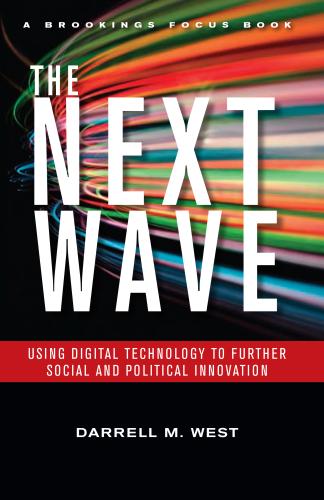
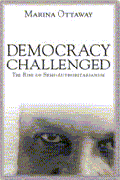
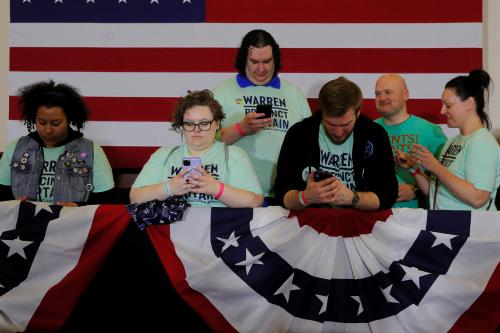
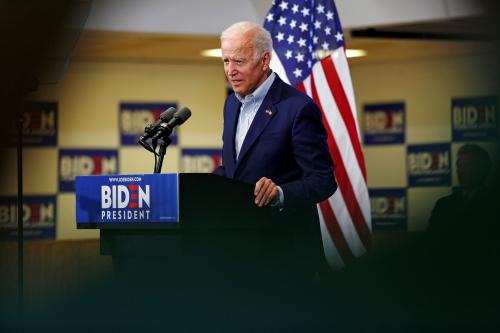
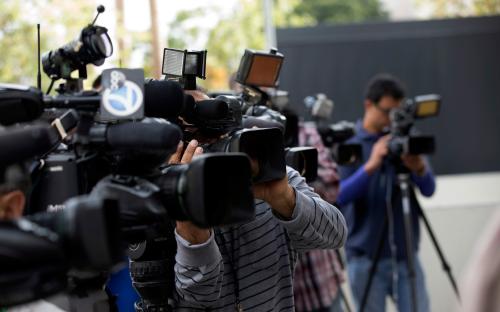

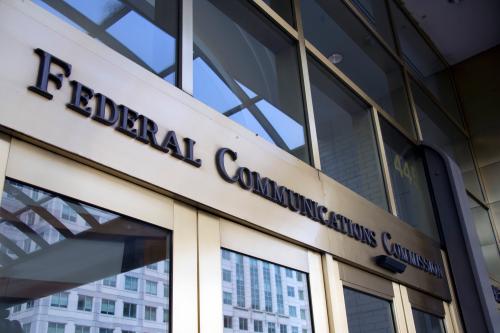


Commentary
Can social media ‘targetcasting’ and democracy coexist?
November 13, 2019